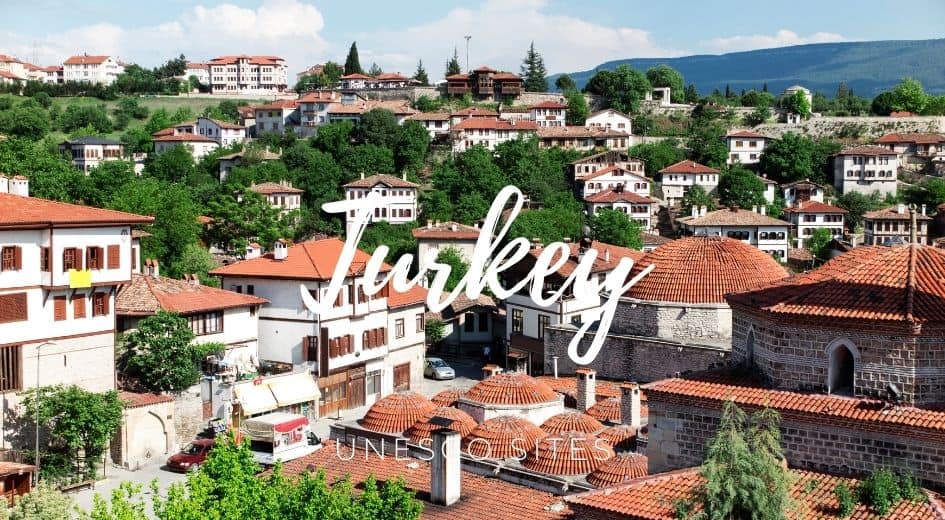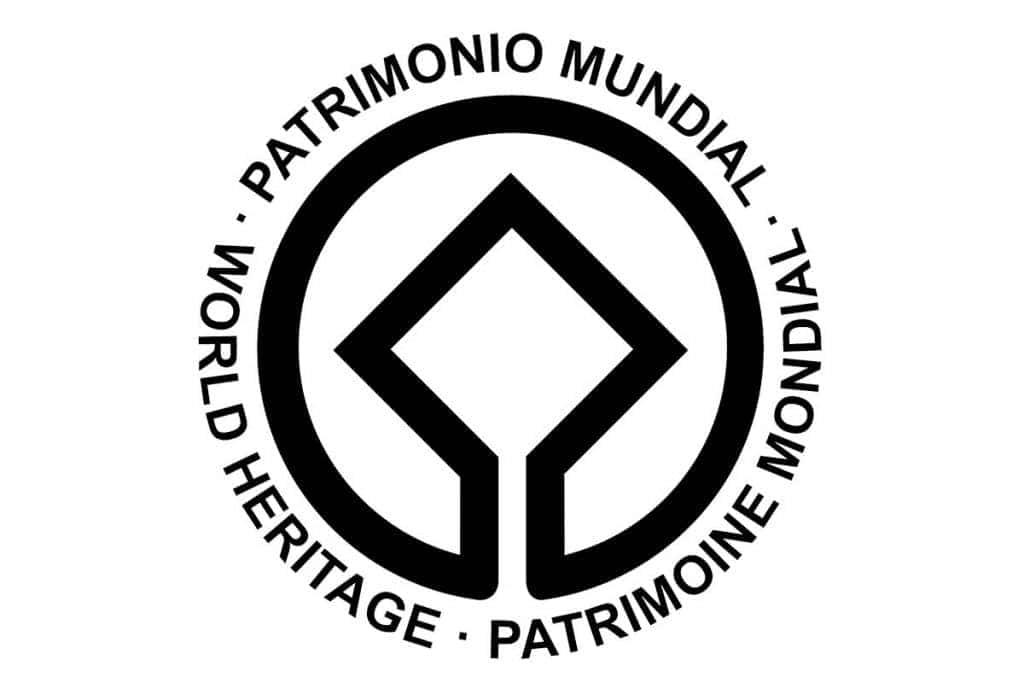Table of Contents


Turkey UNESCO has registered 19 sites on the World Heritage list and 84 on the tentative list.
Some places are so interesting that it’s relevant to keep them for future generations. This is why UNESCO has built a list of crucial classified properties in which superb places stand out for their aesthetic, natural, artistic, or cultural significance.
More than a thousand places are registered as Unesco’s World Heritage worldwide. Due to my interest in visiting World Heritage sites, I compiled the UNESCO list in Turkey and the corresponding map.
Turkey UNESCO list
- Aphrodisias
- Archaeological Site of Ani
- Archaeological Site of Troy
- Arslantepe Mound
- Bursa and Cumalıkızık: the Birth of the Ottoman Empire
- City of Safranbolu
- Diyarbakır Fortress and Hevsel Gardens Cultural Landscape
- Ephesus
- Göbekli Tepe
- Great Mosque and Hospital of Divriği
- Hattusha: the Hittite Capital
- Historic Areas of Istanbul
- Nemrut Dağ
- Neolithic Site of Çatalhöyük
- Pergamon and its Multi-Layered Cultural Landscape
- Selimiye Mosque and its Social Complex
- Xanthos-Letoon
- Göreme National Park and the Rock Sites of Cappadocia
- Hierapolis-Pamukkale
Turkey UNESCO Map
Click on the blue pins to view more relevant information about each World Heritage site in Turkey.
Description
- Aphrodisias – An ancient city in southwestern Turkey dedicated to the goddess Aphrodite and known for its well-preserved Roman-era ruins.
- Archaeological Site of Ani – A ruined medieval city on the border of Turkey and Armenia that was once an important center of trade and culture.
- Archaeological Site of Troy – The ruins of the ancient city of Troy, famous for the Trojan War and immortalized in Homer’s “Iliad.”
- Arslantepe Mound – A Neolithic and Chalcolithic-era archaeological site in southeastern Turkey, known for its impressive collection of artifacts and importance in studying early human history.
- Bursa and Cumalıkızık: the Birth of the Ottoman Empire – A historic city and nearby village in northwestern Turkey that played a crucial role in the rise of the Ottoman Empire.
- City of Safranbolu – A historical city in northern Turkey known for its well-preserved Ottoman-era architecture and urban design.
- Diyarbakır Fortress and Hevsel Gardens Cultural Landscape – A fortified city in southeastern Turkey with well-preserved walls and structures dating back to the Roman and Islamic periods and an important cultural landscape of agricultural terraces and gardens.
- Ephesus – An ancient city on the western coast of Turkey, known for its well-preserved ruins and importance in Greek, Roman, and early Christian history.
- Göbekli Tepe – A prehistoric archaeological site in southeastern Turkey known for its impressive collection of megalithic structures and its significance in studying early human history.
- Great Mosque and Hospital of Divriği – A 13th-century mosque and hospital in eastern Turkey known for its impressive architectural design and intricate decorations.
- Hattusha: the Hittite Capital – The ruins of an ancient Hittite city in central Turkey, known for its impressive fortifications and royal architecture.
- Historic Areas of Istanbul – A collection of historic neighborhoods and landmarks in Istanbul, Turkey, including the Hagia Sophia, Topkapi Palace, and the Blue Mosque.
- Nemrut Dağ – A monumental site in southeastern Turkey that features the ruins of a royal tomb and the impressive Mount Nemrut.
- Neolithic Site of Çatalhöyük – An ancient Neolithic-era settlement in central Turkey known for its impressive architecture and cultural significance.
- Pergamon and its Multi-Layered Cultural Landscape – An ancient city and cultural landscape in western Turkey known for its impressive ruins and rich history.
- Selimiye Mosque and its Social Complex – A 16th-century social complex in northwestern Turkey known for its impressive architectural design and historical significance.
- Xanthos-Letoon – The ruins of two ancient Lycian cities in southwestern Turkey, known for their impressive architecture and rich history.
- Göreme National Park and the Rock Sites of Cappadocia – A natural park in central Turkey known for its unique rock formations and impressive cave dwellings and underground cities.
- Hierapolis-Pamukkale – An ancient city and natural thermal springs in western Turkey, known for its impressive Roman-era ruins and stunning white terraces of travertine rock.
UNESCO World Heritage Sites in Turkey have protected places for their cultural and natural importance.
Sites on the Tentative List
- Karain Cave
- Sümela Monastery (The Monastery of Virgin Mary)
- Alahan Monastery
- St. Nicholas Church
- Harran and Sanliurfa
- The Tombstones of Ahlat the Urartian and Ottoman citadel
- Seljuk Caravanserais on the route from Denizli to Dogubeyazit
- Konya-A capital of Seljuk Civilization
- Alanya
- Mardin Cultural Landscape
- St.Paul Church, St.Paul’s Well and surrounding historic quarters
- Ishak Pasha Palace
- Kekova
- Güllük Dagi-Termessos National Park
- Ancient Cities of Lycian Civilization
- Archaeological Site of Sagalassos
- Archaeological Site of Perge
- Esrefoglu Mosque
- Hatay, St. Pierre Church
- Aizanoi Antique City
- Archeological Site of Zeugma
- Gordion
- Historic Town of Birgi
- Mausoleum and Sacred area of Hecatomnus
- Medieval City of Beçin
- Historical Monuments of Niğde
- Yesemek Quarry and Sculpture Workshop
- Odunpazari Historical Urban Site
- Mamure Castle
- Haci Bektas Veli Complex
- Archaeological site of Laodikeia
- Lake Tuz Special Environmental Protection Area (SEPA)
- The Ancient City of Sardis and the Lydian Tumuli of Bin Tepe
- İznik
- Zeynel Abidin Mosque Complex and Mor Yakup (Saint Jacob) Church
- Tomb of Ahi Evran
- Vespasianus Titus Tunnel
- Mahmut Bey Mosque
- Archaeological Site of Kültepe-Kanesh
- Ancient City of Kaunos
- Anatolian Seljuks Madrasahs
- Ancient City of Korykos
- Ancient City of Anazarbos
- Çanakkale (Dardanelles) and Gelibolu (Gallipoli) Battles Zones in the First World War
- Eflatun Pinar: The Hittite Spring Sanctuary
- Akdamar Church
- The Theatre and Aqueducts of the Ancient City of Aspendos
- Eshab-ı Kehf Kulliye (Islamic-Ottoman Social Complex)
- Historic Guild Town of Mudurnu
- Mount Harşena and the Rrock-tombs of the Pontic Kings
- Mountainous Phrygia
- Ancient City of Stratonikeia
- The Bridge of Uzunköprü
- Ismail Fakirullah Tomb and its Light Refraction Mechanism
- Yıldız Palace Complex
- The Malabadi Bridge
- Tushpa/Van Fortress, the Mound, and the Old City of Van
- Sultan Bayezid II Complex: A Center of Medical Treatment
- Yivli Minaret Mosque
- Sivrihisar Great Mosque
- The Bodrum Castle
- Nuruosmaniye Complex
- Ancient city of Kibyra
- Haci Bayram Mosque and its Surrounding Area (the Haci Bayram District)
- Kızılırmak Delta Wetland and Bird Sanctuary
- Archaeological Site of Assos
- Ayvalık Industrial Landscape
- Ivriz Cultural Landscape
- Early Period of Anatolian Turkish Heritage: Niksar, The Capital of the Danishmend Dynasty
- The Underground Water Structures in Gaziantep; Livas’ and Kastels
- Wooden Roofed and Wooden Columned Mosques in Anatolia
- The Bridge of Justinian
- Archaeological Site of Priene
- Historic City of Harput
- Basilica Therma (Sarıkaya Roma Hamamı)
- Nature Park of Ballıca Cave
- Trading Posts and Fortifications on Genoese Trade Routes from the Mediterranean to the Black Sea
- Historic Town of Beypazarı
- Karatepe-Aslantaş Archaeological Site
- The Historic Port City of Izmir
- Zerzevan Castle and Mithraeum
- Koramaz Valley
- Late Antique and Medieval Churches and Monasteries of Midyat and Surrounding Area (Tur ʿAbdin)
- Historic Town of Kemaliye


